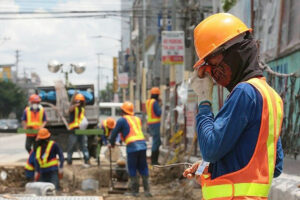A BILL seeking to create a 30-year planning horizon for infrastructure and establishing a National Infrastructure Program has been filed at the Senate, Senator Mark A. Villar said in a statement.
“It is important that we advance the Build, Build, Build program in the Senate, because having a long-term plan for our infrastructure program can grow the economy… It will (make it easier to improve) roads, bridges, and other structures, (generating) thousands of jobs,” he added.
Build, Build, Build was the former government’s P8.4-trillion flagship program designed to address the Philippines’ lack of competitiveness due to gaps in its infrastructure.
Mr. Villar is being tipped as a possible chairman of the Senate Trade, Commerce and Entrepreneurship Committee.
The bill focuses on the process for identifying the core infrastructure projects the government plans to pursue in transport, energy, water resources, information and communications technology, social infrastructure systems, and others.
“I am certain that with the passage of this bill, we will encourage investors, facilitate job creation, boost economic growth, and most importantly, improve the quality of life in both urban and rural areas,” Mr. Villar said.
The Department of Public Works and Highways (DPWH), which Mr. Villar used to head, estimates that in the 2016-2020 period, Build, Build, Build generated 6.5 million jobs. It also tallied 1.6 million hires between March 2020 and the end of 2021.
“In the past six years, the Filipino people have seen and experienced the impact of the Philippines’ Golden Age of Infrastructure. The Build, Build, Build program resulted in the creation of hundreds of ports, thousands of roads and bridges, and millions of jobs,” he said.
Separately, Albay Rep. Jose Ma. Clemente S. Salceda, who is expected to retain the chairmanship of the House Ways and Means Committee, filed a joint resolution on Thursday adopting Build, Build, Build as a national infrastructure development framework with a set minimum annual spending target.
According to House Joint Resolution 6, between 2023 and 2028, at least 5% of gross domestic product (GDP) must be spent on infrastructure, with an eventual target of 6% of GDP.
Mr. Salceda, in the resolution, said that “proper planning and design, adequate funding, efficient implementation, and timely and effective completion of infrastructure projects will be crucial to economic recovery from the scarring effects of the COVID-19 pandemic and the attendant global economic slowdown.”
If passed, the government will be required to complete infrastructure projects in the pipeline and promote locally funded infrastructure development. — Alyssa Nicole O. Tan
